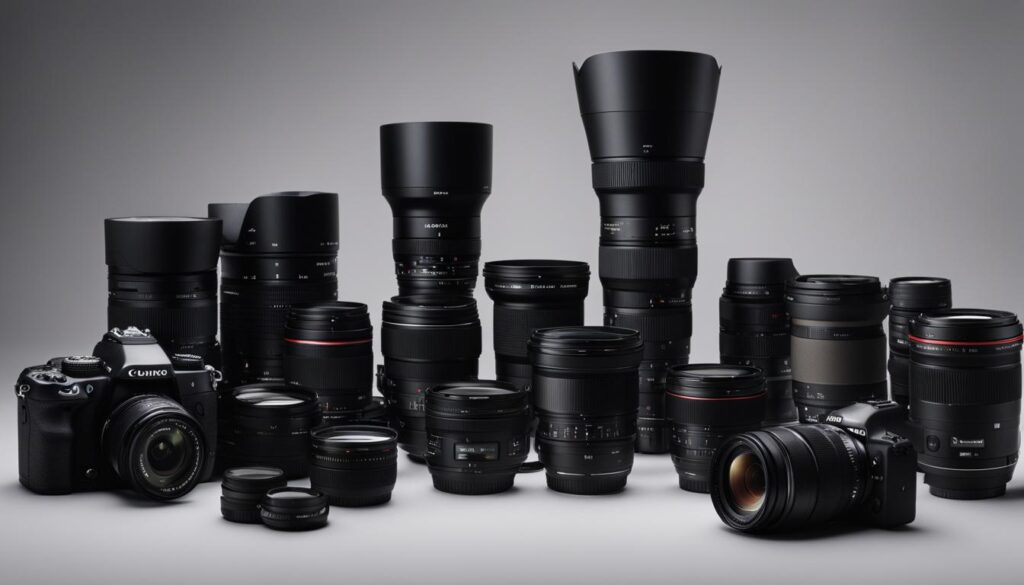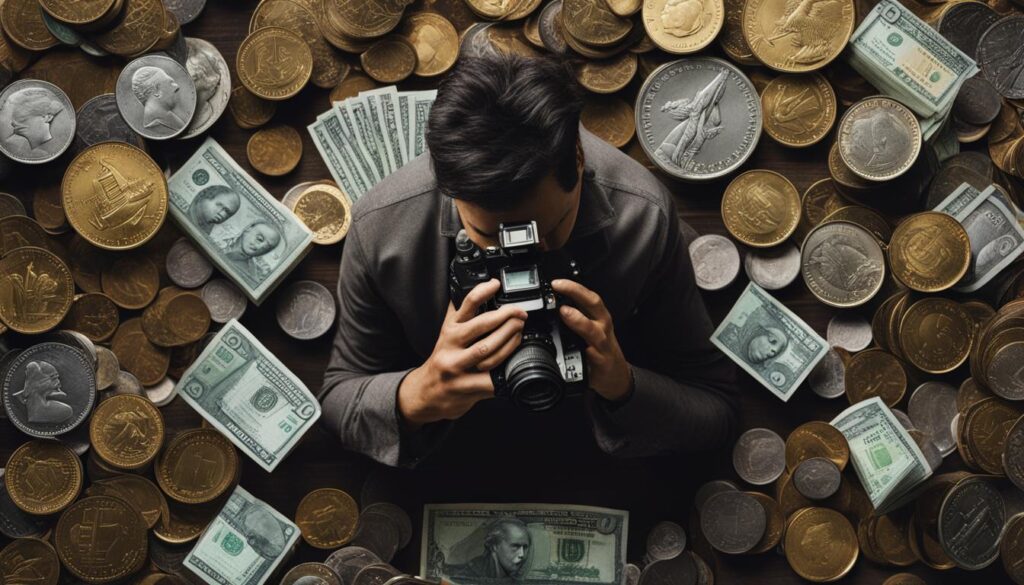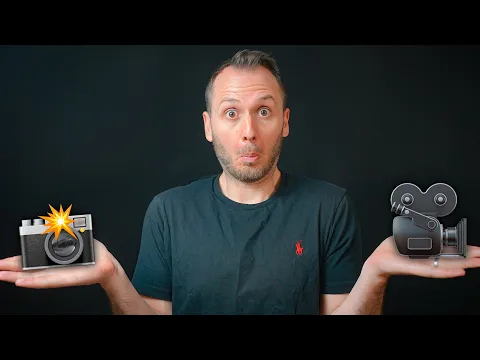When planning a photoshoot, one of the key considerations is the cost involved. If you’re wondering how much a 1-hour photoshoot will cost you, it’s important to take into account several factors that can affect pricing. Understanding the pricing landscape will help you set realistic expectations and ensure that you are getting the best value for your money.
The cost of a 1-hour photoshoot can vary depending on factors such as location, photographer experience, and the type of photography. Professional photographers often offer different photography packages that cater to various needs and budgets. These packages may include different levels of service and may have varying price ranges. It’s important to carefully review the pricing details of each package and choose the one that best suits your requirements.
While affordability is certainly a consideration, it’s also crucial to remember that quality and expertise come at a price. Professional photography rates may seem higher compared to other options, but they typically offer a higher level of skill, attention to detail, and artistic vision that can make a significant difference in the final results.
It’s worth noting that the pricing for a 1-hour photoshoot is just one aspect of the equation. The overall value you receive should also be considered. This includes factors such as the photographer’s professionalism, equipment quality, editing and post-processing skills, and overall experience. A skilled photographer can capture the essence of a moment, bringing your vision to life and creating timeless memories.
Key Takeaways:
- Cost of a 1-hour photoshoot can vary depending on factors such as location, photographer experience, and type of photography.
- Professional photography rates may seem higher, but they offer a higher level of skill, attention to detail, and artistic vision.
- Consider the overall value you receive, including the photographer’s professionalism, equipment quality, and editing skills.
Basic Pricing Methods
When it comes to pricing your photography services, there are two basic methods that photographers commonly use: the hourly rate and the flat rate. Each method has its own considerations and advantages, and choosing the right one for your photography business is essential. Let’s take a closer look at these pricing methods to help you make an informed decision.
Hourly Rate
The hourly rate is a popular pricing method for photographers, especially for events and projects that require a specific amount of time. With this method, you charge clients based on the number of hours you spend shooting and editing. Whether it’s a wedding, a corporate event, or a portrait session, you can calculate your rate by considering factors such as your level of expertise, the industry standard, and the type and complexity of the shoot.
"The hourly rate allows photographers to charge for their time spent shooting and editing pictures."
However, it’s important to keep in mind the additional time and expenses involved in photography, such as pre-production preparation, post-processing, and consultations with clients. These considerations should be factored into your hourly rate to ensure that you are properly compensated for all the work you put into each project.
Flat Rate
The flat rate is another pricing method commonly used by photographers. With this approach, you charge a fixed fee for a specific job or package, regardless of the number of hours it takes to complete. The flat rate includes various factors such as location selection, post-processing time, prints, and any additional services you provide.
"The flat rate is a fixed fee for a specific job and includes factors such as location selection, post-processing time, and printing the finished photos."
This method can be beneficial for both you and your clients, as it provides transparency and eliminates any uncertainty regarding the final cost. It allows you to set a clear price for your services based on the value you provide, the complexity of the project, and the deliverables included.
Before deciding on a pricing method, it’s important to weigh the pros and cons of each and consider factors such as your target market, competition, and client expectations. Remember, there is no one-size-fits-all approach to pricing, and it’s essential to find a method that aligns with your business goals and provides fair compensation for your time and expertise.
Now that we’ve explored the basic pricing methods, let’s move on to the next section, where we will discuss the rates photographers charge based on their experience.
Rates Based on Experience
The rates for photography services can vary based on the photographer’s level of experience. Here’s a breakdown of the different rates based on experience:
Beginners Photography Rates
Beginners who have just started taking pictures for social media and local advertising often charge lower rates as they are building their portfolio and gaining experience. These entry-level photographers provide affordable options for clients who are on a budget or looking for cost-effective solutions.
Students Photography Rates
Students studying photography may charge slightly higher rates compared to beginners as they have acquired knowledge and skills through their education. These rates reflect their dedication to their craft and their commitment to producing quality work. Students often offer creative perspectives and fresh ideas to their clients.
Entry-Level Photographers Rates
Entry-level photographers who have graduated from photography school or university command higher rates due to their formal education and training. Their rates are usually reflective of their technical expertise and the level of professionalism they bring to their work. These photographers have gained sufficient skills and are ready to offer services to a wider range of clients.
Professional Photographers Rates
Professional photographers with a significant amount of experience often charge even higher rates. These photographers have honed their craft over the years and have built a strong reputation in the industry. Their rates are reflective of their expertise, creativity, and ability to deliver consistently high-quality work, making them a top choice for clients seeking professional results.
Top Photographers Rates
Top photographers who are considered masters of their craft can command the highest rates in the industry. These photographers have established themselves as industry leaders through their unique style, exceptional skill set, and impressive portfolio. Their rates represent the premium quality they offer and the demand for their services among clients who value excellence and top-tier photography.

How Much Can a Photographer Earn?
The earning potential in the photography industry can vary significantly depending on several factors such as the number of shoots booked and the rates charged. As a photographer, your income can fluctuate based on the time and effort you invest in your craft.
On average, a photographer can earn a few hundred dollars for a half-day shoot, while a full-day shoot can command thousands of dollars. The exact earning potential depends on various elements, including your experience level, reputation, and the type of photography you specialize in.
Over the course of a week, photographers can earn several thousand dollars, and these earnings can increase significantly when considering longer time periods such as a month or year. It’s important to note that these figures are approximate and can vary based on individual circumstances.
When determining your photography rates, it’s crucial to consider the value you provide to clients, your expertise, and the level of service you offer. By carefully assessing these factors and setting competitive prices, you can optimize your earning potential in the industry.

One way to maximize your income is by continuing to refine your skills, gaining experience, and establishing a strong reputation. As you become more proficient and well-known within your niche, you can gradually increase your rates and attract higher-paying clients.
Factors Affecting Photography Income
The factors that determine how much a photographer can earn go beyond the number of shoots and rates charged. Other important factors include:
- The demand for your specific style or niche
- The geographical location of your business
- The level of competition in your area
- Your marketing and networking efforts
- The quality of your portfolio and online presence
By strategically positioning yourself and continuously delivering exceptional work, you can increase your earning potential over time. It’s important to regularly assess your rates and adjust them accordingly to maintain profitability and keep up with market trends.
| Time Period | Income Range |
|---|---|
| Half-Day Shoot | A few hundred dollars |
| Full-Day Shoot | Thousands of dollars |
| Weekly | Several thousand dollars |
| Monthly or Yearly | Increase significantly |
Table: Photography Income by Time Period
Keep in mind that photography income is not solely dependent on the number of shoots but also on your ability to provide value to your clients. Continuously developing your skills, upgrading your equipment, and staying updated with industry trends can contribute to a higher income potential and long-term success as a photographer.
Factors that Affect Pricing for Beginner Photographers
When setting prices for your photography services as a beginner photographer, there are several factors that you need to consider. These factors play a crucial role in determining your pricing, ensuring that you cover your expenses and make a profit. Take a closer look at the key factors that affect pricing in the photography industry:
1. Cost of Materials
One of the factors influencing photography pricing is the cost of materials. This includes expenses such as printing photos and photo editing software. High-quality prints and professional editing software can significantly impact your overall costs. Make sure to factor in these expenses when setting your prices.
2. Cost of Labor
Another important consideration is the cost of labor. As a photographer, your time spent on shoots and editing pictures has value. Calculate the amount of time you invest in each client’s project and determine the appropriate hourly rate that reflects your expertise and skill level.
3. Overhead Costs
Overhead costs include all the expenses associated with running your photography business. This includes equipment, studio space, insurance, and advertising expenses. These costs are essential for maintaining and growing your business, so it’s important to incorporate them into your pricing structure.
4. Fixed Costs and Variable Costs
In addition to overhead costs, you need to consider both fixed and variable costs. Fixed costs are expenses that remain constant, regardless of the number of photography sessions you have. They include items like insurance and studio rents. Variable costs, on the other hand, depend on the scale and scope of each project, such as renting additional equipment or props for a specific shoot. Identifying and including these costs will help you determine the appropriate pricing for different types of projects.
By carefully considering these factors, you can ensure that your pricing accurately reflects the value of your services and covers your expenses. Effective pricing is crucial for both your profitability and establishing yourself as a professional photographer in the industry.

Imperative for accurate pricing, these factors allow beginner photographers to understand the elements that impact the cost of their services. By incorporating expenses such as materials, labor, overhead, and fixed and variable costs, you can set pricing that reflects the value of your work and positions you for success in the industry.
Types of Photoshoots for Clothing Online Store
When planning a photoshoot for your clothing brand, it’s important to consider the different types of photoshoots that can showcase your products in the best light. Each type of photoshoot has its own requirements and considerations, allowing you to achieve specific goals and create impactful visuals.
1. Product Photography Against a Background
Product photography against a background is a classic and essential type of photoshoot for clothing brands. This style focuses solely on capturing your garments in a clean and professional manner, allowing customers to see the details and features of your products. Utilize a neutral backdrop or a background that complements your clothing to create a cohesive and visually appealing presentation.
2. Lifestyle Photoshoots featuring Models and Real-Life Settings
Lifestyle photoshoots bring your clothing to life by showcasing them in real-life scenarios. By incorporating models and selecting appropriate settings, you can depict how your garments can be worn in everyday situations. This type of photoshoot adds personality and relatability to your brand, allowing potential customers to envision themselves wearing your clothing.
3. Editorial Photography Focused on Storytelling and Brand Essence
Editorial photography goes beyond simply showcasing your products. It tells a story and evokes emotions that resonate with your target audience. This style allows you to convey the essence and values of your brand through carefully curated visuals. Collaborating with a team of creative professionals such as stylists, makeup artists, and photographers can elevate your editorial photoshoot and create a captivating narrative.
When planning your clothing photoshoot, consider the goals and purpose of the shoot. Determine whether you want to focus on highlighting the product, creating a relatable lifestyle, or conveying a specific brand message. Each type of photoshoot requires careful planning and attention to detail to ensure that your clothing is showcased in the most compelling way.
Here are some additional clothing photoshoot ideas and tips to enhance the quality and effectiveness of your images:
- Experiment with different angles and perspectives to capture unique shots.
- Pay attention to lighting to ensure that your clothing is well-illuminated and the colors appear true-to-life.
- Consider incorporating props and accessories that complement your clothing and enhance the overall aesthetic of the images.
- Showcase your clothing in a variety of poses and compositions to provide a comprehensive view of the garments.
- Ensure that your models, if used, represent your target audience and accurately reflect the values of your brand.
By selecting the right type of photoshoot and implementing these ideas and tips, you can create a visually stunning and compelling visual representation of your clothing brand.
Embracing Diversity and Backgrounds
When it comes to clothing photography, embracing diversity and using diverse models in photoshoots can have a powerful impact. By featuring models from different backgrounds, body types, and ethnicities, you can create a sense of inclusivity and attract a wider audience to your brand. Diverse models help represent the diverse range of customers who may be interested in your clothing.
Backgrounds also play a crucial role in clothing photography. The choice of background sets the tone for the entire image, creating the right atmosphere and highlighting the clothing in the best possible way.
Pastel backgrounds: Pastel backgrounds can create a soft and dreamy aesthetic, adding a touch of elegance and femininity to your clothing images. These backgrounds work particularly well for delicate and romantic clothing pieces.
Bright contrasting colors: On the other hand, bright contrasting colors can make the clothing pop and create a dynamic visual impact. Bold and vibrant backgrounds can add energy and excitement to your images, making them visually captivating.
In addition to the choice of models and backgrounds, props and accessories can play a significant role in enhancing the overall look and feel of your clothing images. Props can add a touch of storytelling and help create a lifestyle narrative around your clothing. Accessories, such as statement jewelry or bags, can complement the clothing and elevate the style and aesthetic.
Example Photoshoot:
"For our spring collection, we wanted to showcase the vibrant energy and diversity of our brand. We carefully selected diverse models representing different body types and ethnicities. To highlight the colorful and playful nature of our collection, we chose bright contrasting backgrounds that accentuated each outfit’s unique features. In addition, we incorporated props such as bicycles and flowers to create a sense of movement and a fun outdoor atmosphere. The combination of diverse models, captivating backgrounds, and strategically placed props resulted in visually stunning images that truly represented our brand’s values and resonated with our target audience."
By embracing diversity, choosing the right backgrounds, and incorporating props and accessories, you can create visually appealing and engaging clothing images that capture attention and leave a lasting impression on your audience.

"Diverse models and captivating backgrounds can bring your clothing images to life, making them more relatable and appealing to a wide range of customers. Don’t be afraid to experiment with different backgrounds and props to create unique and visually striking visuals that showcase your brand’s personality and style."
Volumize with Tissue Paper and GIFs
When it comes to showcasing clothing in a visually appealing way, volumizing the images can make a significant difference. By using tissue paper, you can create natural-looking creases and add life-like volume to garments, especially for streetwear and sporty looks. This technique helps the clothing appear more dynamic and visually engaging, capturing the attention of potential buyers.
Additionally, in the age of social media and online platforms, creating GIFs in clothing photography has become a popular trend. GIFs bring a dynamic element to the images, allowing you to showcase the details and movement of the clothing in an interactive and eye-catching way. This can be particularly effective in grabbing attention and enticing potential customers to explore your clothing line further.
Here’s an example of how tissue paper can be used to volumize clothing images:
Step-by-Step Guide: Volumizing Clothing Images with Tissue Paper
- Choose the garments you want to photograph and prepare the tissue paper.
- Insert tissue paper into the sleeves, collar, and any other areas where you want to add volume. Be gentle to avoid damaging the clothing.
- Arrange the garments on a mannequin or model, ensuring that the tissue paper creates natural-looking creases and enhances the desired areas.
- Position the lighting to highlight the volume and details created by the tissue paper. Experiment with different angles and intensities to achieve the desired effect.
- Photograph the garments, capturing multiple shots from different angles to showcase the volumizing effect.
- In post-processing, make any necessary adjustments to enhance the volume and overall appearance of the clothing.
Remember, the goal is to create images that accurately represent the clothing while making them visually appealing and enticing to potential customers. Whether you’re using tissue paper to volumize garments or incorporating GIFs into your clothing photography, these techniques can help elevate your visual content and attract attention in a competitive market.
The Intangible and Tangible Aspects of Food and Product Photography Pricing
When setting prices for food and product photography services, it is crucial to consider both the intangible and tangible aspects of the work. These factors play a significant role in determining the value of your services and ensuring that you are appropriately compensated for your time, expertise, and expenses.
Intangible Aspects of Photography Pricing
The intangible aspects of photography pricing encompass elements that may not have a direct monetary value but contribute to the quality of the final product. These aspects include:
- Experience: The level of experience you bring to a photoshoot influences your ability to capture compelling images that resonate with your clients' target audience.
- Creativity: Your creative vision and ability to think outside the box can elevate the overall aesthetic and impact of your photos.
- Training: Continuous education and professional development help you stay updated with the latest techniques and trends in food and product photography.
- Rights: The ownership rights to the images you create are valuable, as they allow you and your clients to use the photos for marketing and promotional purposes.
Tangible Aspects of Photography Pricing
In addition to the intangible aspects, there are tangible factors that contribute to the overall cost of food and product photography. These include:
- Equipment: Investing in high-quality camera gear, lenses, lighting equipment, and accessories is essential for delivering professional-grade results.
- Studio Space: Renting or maintaining a dedicated studio space provides the necessary environment for controlled lighting and staging food and product setups.
- Travel Expenses: If you need to travel to different locations for on-site shoots, these expenses should be factored into your pricing.
- Admin Expenses: Administrative tasks such as client communication, scheduling, and post-production management require time and resources.
- Team Expenses: Collaborating with stylists, assistants, or other professionals can enhance the quality of your work, but it also comes with additional costs.
- Extras: Props, rentals, and any additional materials required specifically for a project contribute to the overall expense.
By taking into account both the intangible and tangible aspects of food and product photography, you can set fair and competitive prices that reflect the value you provide to your clients. It’s essential to communicate these elements clearly to your clients, ensuring mutual understanding and transparency regarding your pricing structure.
Food and Product Photography Pricing Models
When it comes to pricing your food and product photography services, there are different models you can use to determine your rates. Understanding these pricing models will help you effectively communicate with your clients and ensure that you are properly compensated for your work. The three most commonly used pricing models in this industry are:
- Hourly Rate: With this model, you charge your clients based on the number of hours you spend on the shoot and editing. Your hourly rate should reflect your level of expertise and the value you bring to the table. This pricing model is suitable for projects that have unpredictable time requirements.
- Price per Image: Here, you set a fee for each image you deliver to your client. This model is useful when you have a predetermined number of images to deliver, and it allows you to charge based on the quantity of work produced. It’s essential to consider factors such as the complexity of the shot and the amount of post-processing required when setting your price per image.
- Project-based Pricing: With this model, you set a fee based on the entire process, from start to finish. This includes all the work involved, such as pre-production planning, shooting, editing, and delivering the final images. Project-based pricing offers clarity to your clients and allows you to tailor your services to their specific needs.
Each pricing model has its own advantages and considerations. The choice depends on your business goals, the type of project, and the expectations of your clients. It’s important to evaluate your costs, set reasonable rates, and communicate the value you provide to ensure a fair and profitable business.
Useful Tools for Food and Product Photography Pricing
Setting the right pricing for your food and product photography services is crucial for the success of your business. To help you in this process, there are several useful tools available that can simplify and streamline the pricing calculation. These tools can assist you in determining your creative fee, calculating licensing fees, and tracking your time and expenses. Let’s explore some of these tools:
NPPA Pricing Calculator
The NPPA (National Press Photographers Association) pricing calculator is a reputable tool that can help you determine your creative fee based on the specifics of each project. By inputting relevant information such as the usage, scope, and rights requested by the client, the NPPA pricing calculator provides you with a recommended fee range to ensure you are properly compensated for your work.
Getty Images Calculator
The Getty Images calculator is a valuable tool for photographers who license their images. This calculator assists in determining the appropriate licensing fees based on the intended usage, duration, and placement of the image. By using this tool, you can ensure that you are setting fair and competitive prices for the commercial use of your photographs.
Tracking Time and Expenses
Tracking your time and expenses is essential for understanding the actual costs involved in your photography projects. By utilizing tools like Toggl, you can accurately monitor the time spent on each aspect of your work, including pre-production, shooting, editing, and post-production. Additionally, tracking expenses such as equipment, studio rentals, and travel costs helps you have a comprehensive view of your business expenses. These insights can be invaluable when determining your pricing structure and profitability.
By utilizing these useful tools for food and product photography pricing, you can ensure that you are setting fair and profitable rates for your services. The NPPA pricing calculator and Getty Images calculator enable you to calculate fees accurately while tracking time and expenses allows you to have a clear understanding of the costs associated with your work.
How to Command Higher Food and Product Photography Rates
Commanding higher rates for food and product photography requires strategic actions to build value and showcase your expertise. By implementing the following strategies, you can position yourself as a premium photographer and attract clients who are willing to pay higher rates for your services.
Elevate Your Brand
To command higher rates, it’s essential to elevate your brand and create a strong digital presence. Invest in professional website design, a visually appealing portfolio, and captivating content that showcases your skills and previous work. Consistent branding and a well-defined style will attract clients who value quality and are willing to pay a premium rate for your services.
Improve Your Skills
Continuously improving your skills is crucial in commanding higher rates. Invest time and resources in continued education, attend workshops, and participate in online courses to enhance your technical proficiency and stay up-to-date with the latest industry trends. Practice regularly and experiment with different techniques to refine your craft and provide exceptional results to clients.
Expand Your Services
Expanding your services can add unique value and justify higher rates. Consider offering additional services such as styling, prop sourcing, or post-production editing to provide a comprehensive package that exceeds client expectations. By expanding your offerings, you position yourself as a one-stop solution, making it easier for clients to choose you over competitors.
Showcase Your Expertise
A well-curated portfolio that showcases your expertise is essential in commanding higher rates. Choose your best work and present it in a visually engaging and organized manner. Include testimonials from satisfied clients to build credibility and trust. Share your portfolio across multiple platforms, including social media and photography communities, to increase visibility and attract potential clients.
Summary:
To command higher rates for food and product photography, implement strategies that build value, elevate your brand, improve your skills, expand your services, and prominently showcase your expertise. By investing in professional growth and demonstrating your capabilities, you can position yourself as a premium photographer and attract clients who appreciate and are willing to pay a higher rate for your exceptional services.
Conclusion
Summarizing the key points of this article, it is evident that setting proper pricing for photography services is of utmost importance. Whether you are pricing a 1-hour photoshoot or any other type of photography, it is essential to ensure that you are adequately compensated for your time, expertise, and expenses.
Factors such as experience, creativity, and equipment should be taken into account when determining your pricing. By valuing your skills and expertise, you can establish a fair and competitive pricing strategy that reflects the value you bring to your clients.
Furthermore, investing in continuous learning and improvement is crucial for photographers. By continuously enhancing your skills, keeping up with industry trends, and expanding your knowledge, you can stay ahead of the competition and offer exceptional value to your clients. This will enable you to command higher rates and position yourself as a professional with expertise in your field.
In conclusion, by setting proper pricing, continuously investing in your skills, and delivering exceptional work, you can build a successful photography business that not only satisfies your clients but also rewards your dedication and expertise. Remember, pricing is not just about your time. It is about recognizing the value of your artistry and the impact you make through your photography.
FAQ
How much does a 1-hour photoshoot cost?
The cost of a 1-hour photoshoot can vary depending on factors such as location, photographer experience, and the type of photography. It is best to contact a photographer directly for an accurate quote.
What are the basic pricing methods used by photographers?
There are two main methods: hourly rate and flat rate. Hourly rate charges for the time spent shooting and editing, while flat rate includes additional factors like location selection, post-processing time, and printing.
How do photography rates differ based on experience?
Beginner photographers typically charge lower rates, while students and entry-level photographers may charge slightly higher rates. Professional photographers and top photographers command higher rates based on their experience and expertise.
How much can a photographer earn for a 1-hour photoshoot?
Earnings can vary depending on factors such as the photographer’s experience and the type of photography. On average, a photographer can earn a few hundred dollars to thousands of dollars for a 1-hour shoot.
What factors affect the pricing for beginner photographers?
Factors such as the cost of materials, labor including shoot and editing time, overhead costs like equipment and studio space, and fixed costs like insurance and advertising expenses can all affect pricing.
What are the different types of photoshoots for a clothing online store?
There are various types, including product photography against a background, lifestyle photoshoots featuring models and real-life settings, and editorial photography focused on storytelling and brand essence.
How can diversity and backgrounds enhance clothing photoshoots?
Embracing diversity by using diverse models and choosing backgrounds that complement the clothing can add interest and appeal to the images.
How can clothing images be volumized?
Tissue paper can be used to create creases and volume in garments, especially for streetwear and sporty looks. Creating GIFs can also add a dynamic element to clothing images.
What are the intangible and tangible aspects of food and product photography pricing?
The intangible aspects include the photographer’s experience, creativity, training, and rights to the images. The tangible aspects include expenses such as equipment, studio space, travel, and props.
What are the pricing models for food and product photography?
The pricing models can be hourly rate, price per image, or project-based pricing. Each has its own advantages and considerations.
Are there any useful tools for food and product photography pricing?
Yes, tools like the NPPA pricing calculator and the Getty images calculator can help photographers determine their fees for creative services and licensing usage. Tracking time and expenses with tools like Toggl can also provide valuable insights.
How can photographers command higher rates for food and product photography?
By building value, enhancing their brand through a strong digital presence, improving skills through education and practice, expanding services, and showcasing expertise through a curated portfolio and testimonials.
What are the key points to remember about setting photography pricing?
It is important to set proper pricing based on factors like experience and expenses, continuously invest in skills and expertise, and provide exceptional value to clients to build a successful photography business.









Add a comment